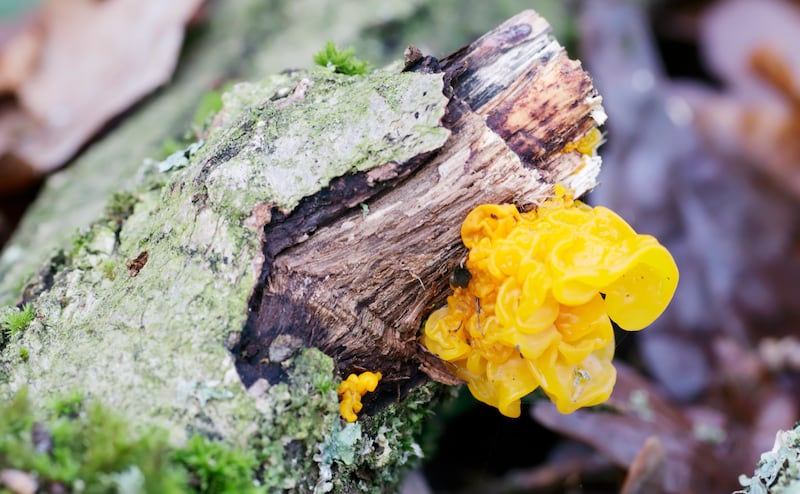My middle lad has infected the youngest child with a hefty dose of Tesla-itis, which involves shouting “Tesla!” whenever one passes by, with extra points awarded to whoever can identify the correct model. Like magpies, they’re obviously drawn to shiny new things, and their minds are blown by the idea that, one day, people won’t even have to bother driving the car but will be automatically brought to wherever they want to go.
Inspired by their hidden talents in accurately recognising external objects, I decide that a spell surrounded by wilderness will cure them of their ills. And so, we take off to spend a few days in a small cottage overlooking the Atlantic, within sight of the mighty Mweelrea, Connacht’s highest mountain.
As we leave Galway city and travel west across the blanket bogs, the flowering rhododendrons come into sight. Vast swathes of purple infest the landscape, lending a kind of neon hue to the otherwise subdued colours of the bog. The kids are quick to spot them everywhere – in dense thickets on the small lake islands, creeping up the flanks of mountains, in gardens and as single shrubs on the side of the road, beside the sheep.
[ Ireland does not have to choose between food and natureOpens in new window ]
The following morning we scramble over the rocky outcrops on the sandy beaches (probably schists dating back 540 million years) and walk over the dune slacks into the fields beyond. We watch the cattle sit with their front legs tucked underneath them, chewing the cud as they face the sea. A dry, high-pitched, “chak chak” sound rings out from a nearby rock, but we can see nothing. According to the app My Merlin, it is a northern wheatear, a robin-sized bird that migrates from Africa to the west of Ireland to breed.
This ‘Irish Whale’ has been spotted off Donegal and the coast of North America
Let’s be ambitious for a plan to establish a real record of the majestic Shannon’s condition
An extraordinary find in the Irish Sea left experts gobsmacked
The golden plover’s numbers in Ireland have dwindled to a few isolated strongholds
The youngest points to a nearby field and asks about “those purply things”. Sticking up, robust like soldiers, are orchids so numerous they carpet the field. There is the Irish marsh-orchid, with intense magenta-purple flowers, and dotted throughout is the lighter heath spotted-orchid, which has pale pink flowers with darker streaks along the petals. The youngest gets on her knees and tilts her head into the flowers: the closer you get to an orchid, the more beautiful it becomes.
We walk home. The monotone green of the small cultivated fields is a backdrop to the hedgerows, which explode with colour; the sugar-pink ragged robin, red clover, purple loosestrife and foxglove. We spot the giant rhubarb, gunnera, an invasive scourge originally from South America. It has formed a dense colony along the banks of a small stream that flows into the sea.
My inspiration is a soon-to-be-published book, Step Into Nature by Rachel McKenna, a conservation architect with Offaly County Council. Her previous book, Traditional Architecture in Offaly, is a deep dive into vernacular buildings made of local materials by local people.
McKenna began to notice the wildlife around her a few years ago. “This book is a personal awakening,” she writes. “We must pay attention to what is around us, record it, tell others, and, where at all possible, make efforts to increase biodiversity in our gardens, workplaces, schools and communities ... Each discovery is a small triumph and such encounters have extraordinary potency.”
Step into Nature is a monthly guide to what’s out there. McKenna resists the urge to write too much – or too enthusiastically – about different species; instead, she offers just enough to whet our appetites and motivate us to go out and discover more.

She draws our attention to the stuff that grows around us but is easily ignored. In the cold months of January, she writes about the colourful fungi nestled in the decaying leaves. The names are glorious: candlesnuff, glistening inkcap, scarlet caterpillarclub. There’s a photograph of an orange gelatinous mass, a fungus known as “yellow brain” (aka witch’s butter), which feeds off fungi that grow on fallen branches and gorse.
McKenna writes that old stone walls “provide islands mapped with lichen”, and between the cracks is home to ferns such as the rustyback, whose soft silvery scales turn rust-coloured over time.
Nature is never without drama. The flower crab spider is often seen on garden flowers like the familiar white and yellow oxeye daisy. This crab doesn’t spin webs to catch insects; instead, it waits on the petal, its venomous crab-like front legs outstretched, ready to pounce on an unsuspecting bee. The female can change her colour, from chalk white to deep yellow, in what is thought to be an attempt at camouflage.
McKenna’s photographs and hand-drawn sketches are peppered throughout the book. Perhaps the most arresting is a photograph of a pink grasshopper resting on the seed head of a bird’s foot trefoil on Finnamore Lake in Lough Boora. She writes that this sugar-pink insect is a common green grasshopper with erythrism, a rare genetic mutation marked by the prevalence of red pigmentation. It looks like something that should adorn a strip of fancy wallpaper.
Step into Nature calls our attention to the richness of life and reminds us that noticing nature is an active choice. For my Tesla-infected young ones, I have tried to cleanse their little brains by bathing them in orchids, ragged robins and birdsong. It’ll never compete with the status symbol of a technologically impressive, expensive new car. But I do hope it reminds them of how they are connected to life and the world of beauty that’s freely available to all of us, if we decide to see it.














